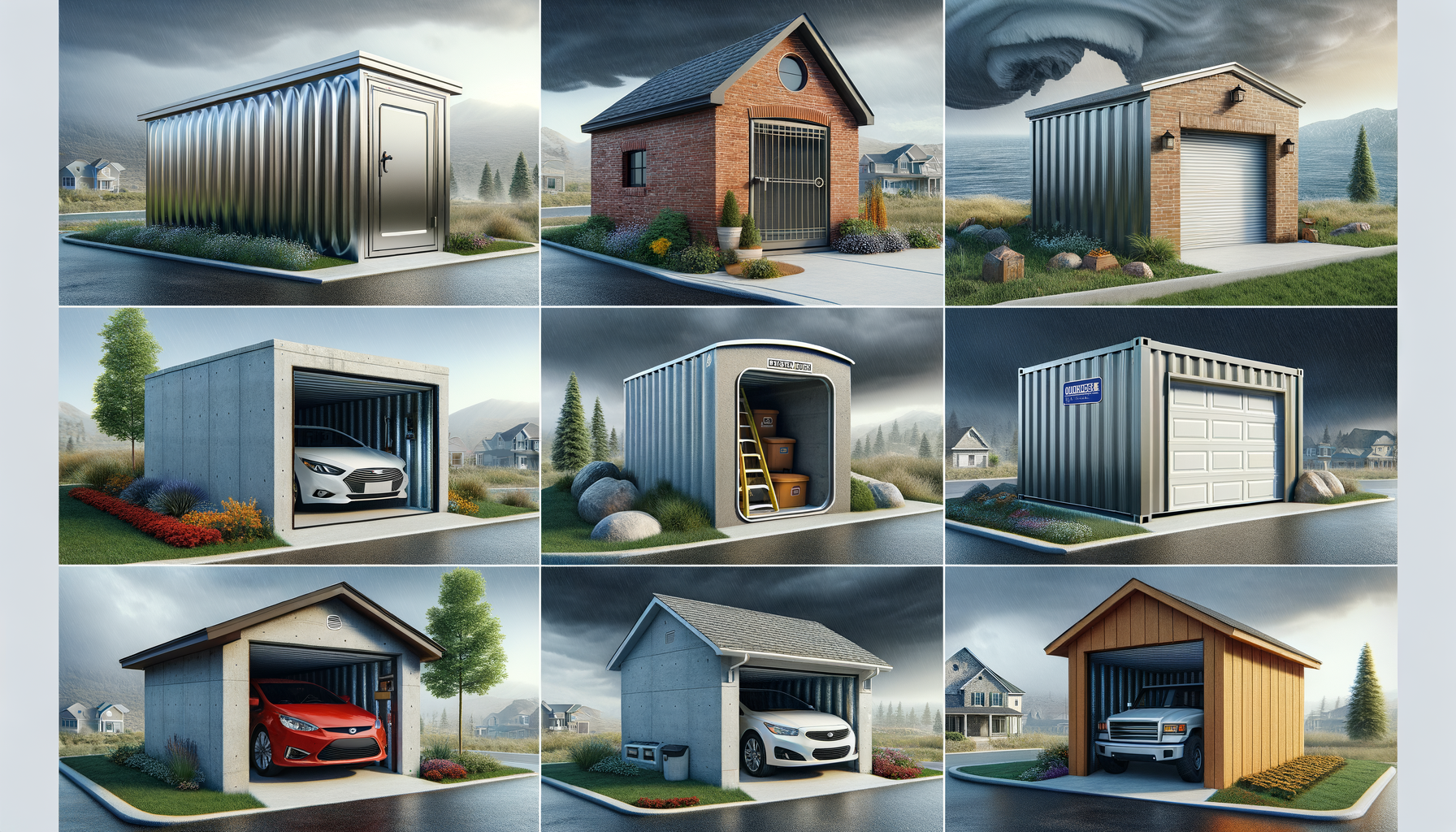All You Need To Know About Affordable Storm Shelters: Steel, Concrete, Garage, and Crawl Space Safe Rooms for Protection
Looking for a reliable storm shelter for added safety? This guide explores different options, including steel storm shelters, precast concrete shelters, above-ground safe rooms, and garage storm shelters. Learn about crawl space shelters, storage container designs, and durable solutions to protect your home. Find the proper storm shelter to ensure security during severe weather conditions.

Steel Storm Shelters: Strength and Reliability
Steel storm shelters are renowned for their robustness and reliability. These shelters are constructed using high-grade steel, offering exceptional protection against severe weather conditions such as tornadoes and hurricanes. The primary advantage of steel shelters lies in their durability. Steel, being a strong and resilient material, can withstand high winds and flying debris, making it a preferred choice for many homeowners.
One of the key features of steel storm shelters is their ability to be installed both above and below ground, providing flexibility depending on the homeowner’s needs and the geographical area. These shelters are often designed to meet or exceed FEMA standards, ensuring that they offer a high level of safety.
Additionally, steel shelters are relatively easy to install and can be customized to fit specific space requirements. They are often coated with rust-resistant materials, enhancing their longevity and reducing maintenance needs. For those seeking a reliable and straightforward solution, steel storm shelters represent a practical choice. However, it is essential to consider factors such as size, installation costs, and local building codes when opting for a steel shelter.
Precast Concrete Shelters: Stability and Security
Precast concrete shelters provide a stable and secure option for those seeking protection from severe weather. These shelters are manufactured off-site and then transported to the installation location, allowing for precise quality control and consistency in construction.
Concrete is inherently strong and offers excellent resistance to extreme weather conditions. Precast concrete shelters are designed to withstand high winds and flying debris, providing a safe haven during storms. The solid construction of these shelters makes them less susceptible to damage over time, ensuring long-term reliability.
One of the benefits of precast concrete shelters is their ability to be customized in terms of size and design. They can be installed above or below ground, depending on the homeowner’s preference and available space. While the initial cost of precast concrete shelters may be higher than some alternatives, their durability and low maintenance requirements often make them a cost-effective choice in the long run.
When considering a precast concrete shelter, it is important to evaluate factors such as installation logistics, local regulations, and potential resale value. These shelters offer peace of mind with their solid construction and proven effectiveness in protecting against severe weather.
Above-Ground Safe Rooms: Convenient and Accessible
Above-ground safe rooms offer a convenient and accessible option for storm protection. These rooms are built within the home or as a separate structure, providing a readily available safe space during emergencies. Unlike underground shelters, above-ground safe rooms do not require excavation, making them easier to install in areas with high water tables or rocky terrain.
The construction of above-ground safe rooms typically involves reinforced steel or concrete, ensuring they meet or exceed FEMA guidelines for storm protection. These rooms are designed to withstand high winds and flying debris, offering a secure environment during severe weather events.
One of the advantages of above-ground safe rooms is their accessibility. They are particularly beneficial for individuals with mobility challenges, as they eliminate the need for stairs or ladders. Additionally, these rooms can be designed to blend seamlessly with the home’s architecture, serving as dual-purpose spaces like closets or pantries when not in use as a safe room.
When considering an above-ground safe room, it is crucial to assess factors such as available space, budget, and local building codes. These rooms provide a practical solution for those seeking a balance between convenience and safety, ensuring that protection is always within reach.